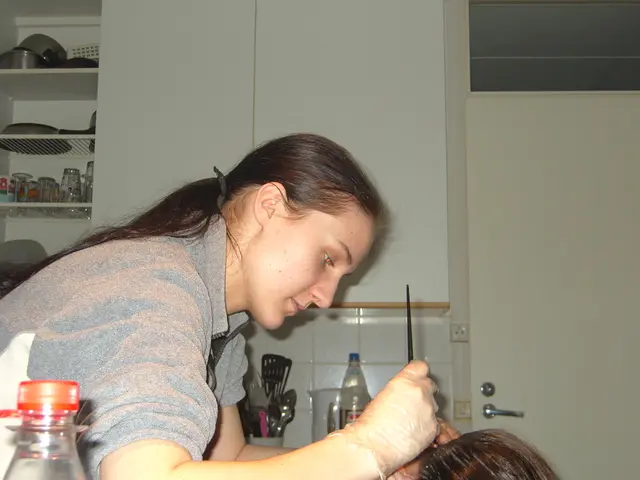Exploring therapeutic avenues for C3 glomerulopathy (C3G)
Sure thing! Here's a fresh take on your article about C3 Glomerulopathy (C3G):
Life Support and Stemming the Tide for C3 Glomerulopathy
C3G - a rare, tricky kidney condition - affects roughly 2-3 folks out of every million. This sneaky furball wreaks havoc on the kidneys by causing protein deposits to build up in their filtering tissues, eventually clogging 'em up and crippling their function.
Its messy business, y'all, leading to kidney failure, if we're not careful. And there's no cure in sight, only shields to protect and delay the doom.
Doctors initially focus on keeping the kidneys humming along with support treatments and immune system suppressors. But, fear not dear C3G warriors, there's a whole posse of new, experimental treatments on the horizon trying to zero in on the villains causing all the ruckus.
The Whodunit of C3G
Oh, this little scoundrel is tricky! Innocent immune system overactivity and inheriting some wonky genes are the prime suspects. Genes that typically make sure the body's immune system's complement system stays in balance, lose their grip and go all rogue. This, in turn, causes some proteins to become overactive.
Overactivated proteins mean an excess of C3 protein, which, in turn, produces deposits in the kidneys. These deposits directly attack the glomeruli - the little blood vessels in the kidneys that filter out waste. With more and more deposits, the glomeruli get damaged, and the kidneys can't filter toxins properly anymore.
Apart from wacky genes, most C3G suspects also carry antibodies that mess with the complement system's regular functioning. There's some evidence of genetic links, but it's a complex case, y'all, with no clear, inherited cause.
Whack-a-Mole Treatments, Anyone?
Currently, treatments can't reverse the damage or cure the condition. But the goal is simple: slow down the damage!
Experts from the Kidney Disease: Improving Global Outcomes (KDIGO) organization have come up with guidelines for managing C3G, recommending:
- Supportive interventions to slow and prevent damage (if kidney function declines)
- Immunosuppressive therapies if the status quo doesn't change in at least 6 months (or if there are other signs of worsening condition)
Medications in the Fight against C3G
Ace Inhibitors and ARBs
These babies are drugs that lower blood pressure and prevent protein leakage through the kidney filters and into the urine.
Mycophenolate Mofetil (MMF) and Glucocorticoids
Both are immunosuppressive drugs, highly recommended if kidney function declines significantly or there are other indicators of worsening condition.
Complement Inhibitors
These medications shut down complement system activity. Doctors might suggest these medications if regular treatments don't work.
New treatments in various stages of clinical trials aim to interrupt the series of events that trigger C3G activity, ultimately preventing kidney damage. Key contenders include:
- Pegcetacoplan and ARO-C3, which target C3
- Danicopan, which targets factor D
- Avacopan, which targets C5a
- KP104, which targets both C3 and C5
- Narsoplimab, which targets MASP-2
Onward, to Better Days!
Although C3G is a devilish condition, progress is being made in treating it, with new medications and therapies on the horizon. Keep fighting the good fight, C3G warriors! Better days are coming!
Enrichment Data:
Latest Advancements in Emerging Treatments for C3 Glomerulopathy (C3G)
C3 glomerulopathy (C3G) is a rare kidney disease characterized by damage to the kidney glomeruli due to abnormal activation of the complement system. Recent advancements in treatment strategies focus on targeting various components of the complement pathway to prevent kidney damage. Here are some of the latest developments:
Approved Treatments
- Iptacopan: Recently approved by the FDA, iptacopan is the first treatment for C3G. It targets the alternative complement pathway by inhibiting factor B, addressing the underlying cause of the disease. The approval follows positive results from the APPEAR-C3G clinical trial, which demonstrated efficacy in reducing proteinuria[1].
Emerging Treatments in Clinical Trials
- Pegcetacoplan and ARO-C3: Both target C3, aiming to prevent its activation and subsequent kidney damage[3].
- Danicopan: Targets factor D, another component of the alternative complement pathway[3].
- Avacopan: Inhibits C5a, a pro-inflammatory component of the complement system[3].
- KP104: Targets both C3 and C5, aiming to block multiple points in the complement cascade[3].
- Narsoplimab: Targets MASP-2, involved in the lectin pathway of the complement system[3].
Challenges and Future Directions
- Kidney Transplant and Recurrence: While kidney transplantation is a treatment option for end-stage kidney disease, C3G has a high recurrence rate post-transplant. New treatments targeting the complement system, such as factor B and C3 inhibitors, are being investigated to manage recurrence[5].
- Genetic Counseling: Due to variable gene penetrance and weak genotype-phenotype correlations, genetic counseling remains complex, limiting predictive accuracy for recurrence[5].
These emerging treatments offer hope for managing C3G more effectively by targeting the complement system's pathways. Continued research is needed to address the challenges of recurrence and to develop more effective management strategies.
- Apart from C3 Glomerulopathy (C3G), other chronic diseases that science is addressing include various types of cancer, respiratory conditions, digestive health issues, eye health problems, hearing impairments, autoimmune disorders, and neurological disorders.
- In the realm of health and wellness, C3G patients might seek complementary therapies, such as CBD, to aid in managing their symptoms and improving their overall well-being.
- C3G shares some similarities with other medical-conditions that result from genetic predispositions or immune system malfunctions, such as skin-conditions and certain cardiovascular-health issues.
- As new treatments and therapies emerge for C3G, they might also find applications in treating other chronic diseases, helping advance science's understanding and management of these conditions.
- The complex etiology of C3G and its involvement in affecting various systems in the body highlight the interconnectedness of health and the importance of comprehensive approaches to managing chronic diseases.
- The ongoing development of therapies and treatments for C3G, like iptacopan, pegcetacoplan, ARO-C3, danicopan, avacopan, KP104, and narsoplimab, underscores the rapid advancements in medical-research and the potential to improve health outcomes for people with chronic diseases.
- Advancements in the understanding and treatment of C3G have the potential to lead to progress in managing other autoimmune-disorders, neurological-disorders, and other conditions related to the complement system's activity.
- As more treatments become available for C3G, there's a renewed hope for patients and their families that better days lie ahead, not just for C3G warriors, but for those battling other chronic diseases as well.








